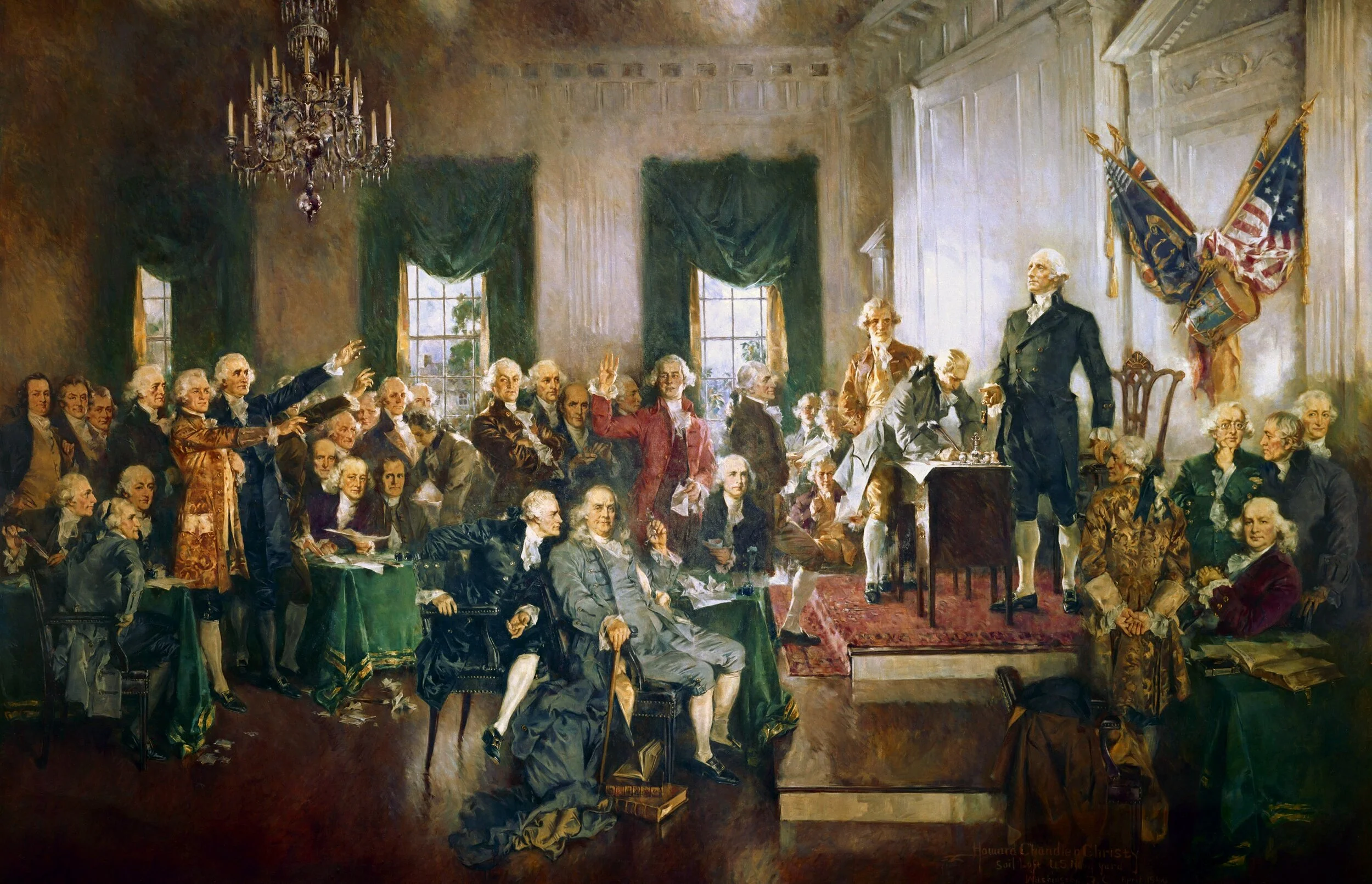The right (blah, blah) shall not (blah, blah)
/Citizens are taught that the US Constitution provides a solid foundation for civil government and a firm guarantee of individual rights of liberty. They are wrong.
The extent of citizens’ rights and liberties are unsettled and uncertain. Far from settling all questions, the Constitution is itself a source of questions.
In July of 2020, citizens demonstrating against government actions in Portland, Oregon were seized by federal officers and hauled away in unmarked vans. The officers wore combat uniforms but no identification of the individual officers or the agency they worked for. It turned out they were from the federal Department of Homeland Security and were operating under the instructions of Attorney General Bill Barr and President Trump.
But those arrests raised questions. The Fourth Amendment to the Constitution states:
The right of the people to be secure in their persons, houses, papers, and effects, against unreasonable searches and seizures, shall not be violated, and no Warrants shall issue, but upon probable cause, supported by Oath or affirmation, and particularly describing the place to be searched, and the persons or things to be seized.
There were no warrants and no probable cause. The citizens who were arrested were on public sidewalks, doing nothing illegal. Nevertheless, the officers seized them, handcuffed them, and hauled them away. Is that not an obvious violation of the law? To make the law clearer, here is an explanation in simple language from the Cornell Law School website:
A seizure of a person, within the meaning of the Fourth Amendment, occurs when the police's conduct would communicate to a reasonable person, taking into account the circumstances surrounding the encounter, that the person is not free to ignore the police presence and leave at his will.
Two elements must be present to constitute a seizure of a person. First, there must be a show of authority by the police officer. Presence of handcuffs or weapons, the use of forceful language, and physical contact are each strong indicators of authority. Second, the person being seized must submit to the authority. An individual who ignores the officer’s request and walks away has not been seized for Fourth Amendment purposes.
When the arrests were questioned, the government official in charge of the officers (Richard Cline of the Federal Protective Service) explained that the Constitutional rights of a citizen not to be arrested without cause didn’t apply in Portland because no one had been arrested.
Cline didn’t deny that certain citizens had been approached on the street by officers, handcuffed, pushed into police vehicles and driven away, and detained for several hours. But he said nobody had been arrested.
Harvard University law professor Andrew Manuel Crespo explained in the Washington Post.
DHS says pulling a man off the street and carrying him away in an unmarked van was just a “simple engagement.” “It was not a custodial arrest,” Cline said. In other words, the officers supposedly complied with the Fourth Amendment because, in Cline’s view, they didn’t need probable cause: There was no arrest, he says.
Source: ntd.com
The federal officer was claiming that “arrest” only happens when a person is fingerprinted, and paperwork is filed officially charging them with a crime. The Portland demonstrators were released without charges. Cline claimed that since no one was booked and charged, the 4th Amendment rules concerning unreasonable seizure don’t apply.
Please pause and realize how appalling that it. Americans have been living under the Constitution for more than 230 years. They are taught that the Constitution assures them their rights. Yet those rights are violated by the federal government, and that government can find evidence within the Constitution to justify its actions.
There are many questions about the Portland protests that might be debated. When should public demonstrations be allowed? Should there be any restrictions at all on the right to petition the Government for a redress of grievances? Does destruction of or damage to property during a protest negate the right to demonstrate peacefully? If demonstrators are legal and peaceful, should the police gather round them or just leave them alone?
But there should be no question about what make a police action illegal. Not in the year 2020. And according to Crespo, there isn’t. The Supreme Court has already ruled that what the federal agents did in Portland is illegal, and the “no arrests were made” justification doesn’t hold water. The case that decided the question is Dunaway v. New York. In 1979, the Supreme Court reversed a murder conviction because the evidence against Dunaway had been obtained during an unofficial conversation at police headquarters.
[T]he police received a lead implicating Irving Dunaway, but the lead did not provide enough information to arrest him. Nevertheless, the police brought him in for questioning. He was not told he was under arrest, but he would be physically restrained if he attempted to leave. After being informed of his Miranda rights, Dunaway waived his right to counsel and made statements and a drawing that incriminated himself.
Just like in Portland, the police in the 1979 case claimed none of the rules applied because they hadn’t arrested Dunaway. The Supreme Court determined that the incident was an arrest and that the police had failed to follow the rules.
As this essay is written, it is not clear what will happen regarding the Portland protests. Since the arrests discussed above, there have been several more arrests that included criminal charges. But the question of whether the earlier arrests were legal remains.
If the US Constitution were a genuine guarantee of civil rights for American citizens, it should have declared a clear policy that would steer police away from the gray areas. The fact that gray areas remain even in 2020 suggests that the Constitution isn’t as effective a safeguard as citizens are told.









